“All aboard!” the conductor cries, beckoning players to follow a story preordained, mapped and measured down to the choicest twist. Or perhaps—“You see an endless land sprawled before you. Where to next?” It’s the classic clash at the heart of every tabletop RPG campaign: sandbox versus railroad. At its core, this divide isn’t just about how much control the Dungeon Master (DM) wields, but how much room players have to shape the world around them.
A sandbox campaign offers boundless freedom—an open-world where players drive the narrative, exploring, scheming, and stumbling into stories from all sides. Imagine a tapestry woven from a thousand possible threads: the players pick which ones to pull, unraveling adventures on their terms. By contrast, the railroad campaign lays out a clear, pre-plotted track. Story beats are engineered, tension is carefully ratcheted, and you’re guaranteed a beginning, middle, and end—with little chance for detours.
Neither method is superior in the abstract. Each format caters to different playstyles and serves unique campaign goals. Some groups delight in meandering wanderlust and unexpected alliances; others crave the adrenaline of a sharply-paced, cinematic saga. The real art—and the challenge—is finding the equilibrium between narrative scaffolding and player freedom, ensuring no one feels stifled or lost at sea.
What often gets overlooked is that DMs rarely stick to a pure version of either, especially when they’re using the right AI RPG Tools! Most campaigns live somewhere in the grey: a railroad with well-tended side paths, or a sandbox with tantalizing plot hooks lurking behind every windblown hill. The tension between sandbox and railroad isn’t a problem to be solved, but a dynamic to be managed—a dial to turn, not a button to press.
This article is your guide to understanding, calibrating, and—most importantly—composing the right blend for your group. Whether you’re new behind the DM screen or a campaign veteran seeking a fresh spark, we’ll help you identify your tendencies, align them with your players’ tastes, and create a world where agency and story unite.
Understanding Sandbox Campaigns
Sandbox campaigns are the giddy Everest of DM ambition: a universe humming with opportunity, characters, and secret histories waiting to be unearthed. Here, true freedom reigns. Players chart their destinies, often lured by rumors, personal goals, or tantalizing glimpses of danger. The DM’s hand isn’t heavy—it’s hidden, quietly building the scaffolding so the players’ actions echo through time.
Try my AI Tabletop RPG generators...and an extensive library of content!
A robust sandbox provides not just a map but a living, breathing ecosystem. Towns thrive or crumble, cunning factions plot behind closed doors, and ancient curses fester just beyond torchlight. In this realm, immersion is king. Players don’t just play their characters, they inhabit them, making choices that ripple outward—sometimes returning as unexpected allies or ruinous consequences sessions later.
Stories in a sandbox aren’t spoon-fed; they emerge. Perhaps the party angers a local lord, then years later faces the fallout. Maybe they rescue a goblin, only to run into him years down the road as a crime boss. This kind of storytelling isn’t just reactive—it’s organic, giving players a genuine sense of agency and investment.
Of course, this open palette shifts much responsibility to the players. Without strong hooks or personal ambitions, a sandbox can feel more like a desert—directionless, barren, unmapped. The DM, in turn, becomes a world builder and improviser, more than a plot director, ensuring the world feels consistent no matter which direction the party marches.
Hallmarks of Sandbox Campaigns:
- Multiple factions with unique, dynamic goals and resources
- Several open quests available simultaneously, none mandatory
- Random encounter tables that make the wilderness unpredictable
- An evolving world state that reacts to player choices
- Reputation systems where actions influence NPC attitude
- A living economy and shifting trade routes
- NPCs with their own agendas, some intersecting with the party’s
- Rumor mills and in-game news that hint at distant events
- Player-driven goals, including self-chosen downtime activities
- Discovery-based progression—players uncovering hidden lore organically
- Recurring consequences for past actions (positive and negative)
- A “hex crawl” or procedural map exploration approach
- Locations not balanced to party level (danger is real and must be respected)
- Mysteries and secrets that reward curiosity rather than plot advancement
- Minimal or optional main quest—a focus on the world over any one story
A well-run sandbox empowers players to write their own legends. DMs become facilitators, weaving together disparate threads into something unexpected and rich. But with freedom comes unpredictability—be ready to improvise, adapt, and seize upon moments of drama or inspiration as they arise.
⚔️ Fantasy RPG Random Tables Books
Make life as a Gamemaster easier…
If you play Dungeons & Dragons, Pathfinder, or other fantasy RPGs, this
RPG random tables series
is packed with encounters, NPCs, treasure, and more. Available in eBook or print—either way, you’ll have a wealth of adventure ideas at your fingertips.
Above all, remember: the best sandboxes don’t feel directionless. They feel alive, humming with potential energy, just waiting for the players’ spark to set events in motion.
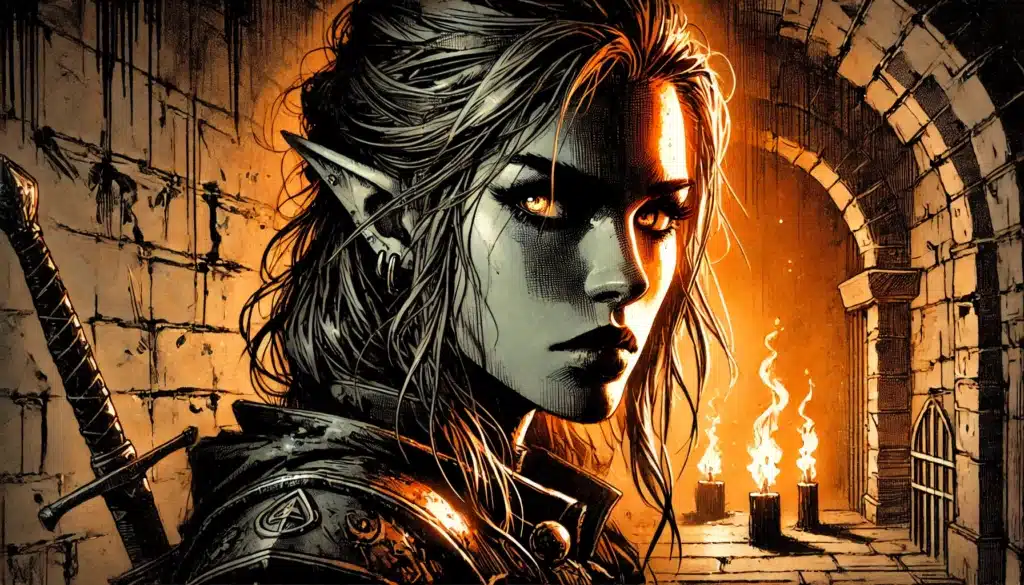
Understanding Railroad Campaigns
Sometimes, a story cries out to be told. The villain’s arc, the prophecy’s fulfillment, that hard-earned climactic showdown—it all hinges on timing, pacing, and a well-laid path. Railroad campaigns thrive on narrative momentum. Here, the DM is both conductor and playwright, orchestrating the party’s journey through crucial story beats, memorable set pieces, and guaranteed catharsis.
The appeal of a railroad lies in its cinematic coherence. Storylines are crisp and intentional; characters develop in tandem with the plot’s flow. A sense of destiny pervades—the adventurers, swept up in epic events, have places to be and roles to play. Players often grow attached to the story’s rhythm, thrilled by the assurance that choices matter—but within defined moments.
In a well-constructed railroad, the DM’s hand is visible but reassuring. The best railroaders are masters of illusion, making sure the ticketed journey feels organic, stakes are clear, and surprises abound. The joy comes from expertly delivered reveals, twists, and emotional payoffs.
Not every player wants to blaze a trail across unmapped wilderness. Some find comfort in knowing where the plot is headed, trusting the DM to guide them through narrative crescendos. These campaigns work best for groups who crave drama, plot-heavy mysteries, and movie-like progression—where how your character makes decisions carries the day, even if the broad strokes are set.
Characteristics of Railroad Campaigns:
- Clearly defined main story arcs and objectives
- Scripted events that trigger at specific milestones
- Plot-critical NPCs who guide or direct the party
- Puzzle or combat encounters specifically engineered for narrative impact
- Fixed story locations unlocked in a set order
- Cutscenes or narrative interludes that frame major events
- Limited side quest options that tie into the main plot
- Scene transitions controlled by DM pacing
- Prophecies or overarching quests that require party involvement
- Consequences that are more about how things unfold, not if
- Timelines and events that wait for the party’s arrival
- Key villain confrontations planned in advance
- Dramatic set pieces with predetermined outcomes
- Player backstory integration that centers on the main plot
- Progress tracked by story milestones rather than exploration
Don’t let anyone tell you that railroading is always a negative. When done with care, the tracks don’t constrain—they direct the wind. A great railroad campaign feels inevitable in hindsight, each scene flowing naturally into the next, but with plenty of room for character growth and surprising player solutions within the framework.
Ultimately, the highest praise a railroad can earn is that the players never notice the rails at all—they’re too busy savoring the ride, hearts pounding as they round the next bend.
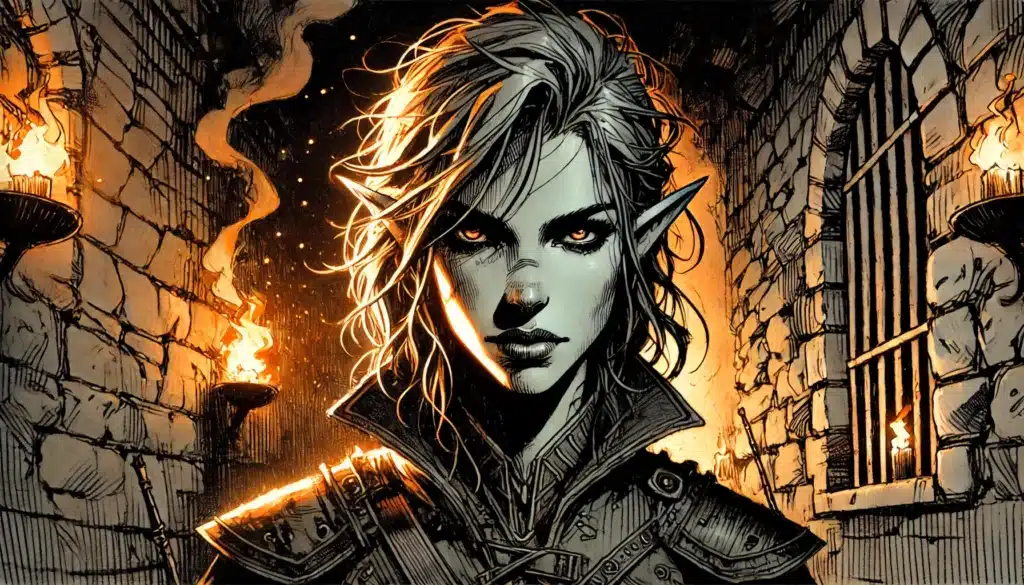
The Dangers of Extremes
As tempting as pure freedom or unyielding narrative structure might seem, both extremes have their perils. A full sandbox—a sprawling tapestry with no guiding thread—can quickly devolve into confusion. Players might feel aimless, unsure of what matters. The DM may burn out attempting to react to every possible action, overwhelmed by the ceaseless improvisation.
Imagine a kingdom with a dozen warring factions and no clear call to adventure. The players spend hours debating which noble to visit, paralyzed by the weight of infinite choice. Momentum dies, and soon, the group wonders why anything matters at all.
On the flip side, a hard railroad can stifle player creativity. Decisions feel hollow if the outcome is already predetermined. Characters become passengers, not drivers—adventurers reciting lines rather than carving their own destinies. Players may try to veer off track, only to be nudged back by invisible walls or omnipresent NPCs.
Take, for example, a haunted manor. In a sandbox, players might burn it down, explore its secrets, or ignore it altogether. On the rails, the story demands they enter, solve its mystery in a specific way, and leave only when the DM decrees victory. Both can work—but the wrong setup for your group can lead to dissatisfaction.
⚔️ Fantasy RPG Random Tables Books
Make life as a Gamemaster easier…
If you play Dungeons & Dragons, Pathfinder, or other fantasy RPGs, this
RPG random tables series
is packed with encounters, NPCs, treasure, and more. Available in eBook or print—either way, you’ll have a wealth of adventure ideas at your fingertips.
The hardest campaigns to salvage are those that lurch between these extremes—utter freedom one session, unbreakable rails the next, leaving players confused about their role. Consistency and clarity are vital, no matter your style.
| Campaign Element | Sandbox Execution | Railroad Execution |
|---|---|---|
| Dungeon | Multiple entrances, hidden sections, can be skipped or returned to later | One entrance, locked until party reaches plot milestone, must clear to continue |
| City Festival | Ongoing, with events based on timing/party actions | Singular event as part of a set story beat |
| Ancient Prophecy | Vague hints, players investigate if they wish | Prophecy explicitly drives main quest and is revealed at planned time |
| Local War | Multiple factions to back/oppose; world changes based on support | Pre-determined winner regardless of player intervention |
| NPC Rival | Rival acts on own agenda, may outpace players or ignore them | Rival always confronts party at climactic moment |
| Mysterious Artifact | Players can sell, destroy, ignore, or wield | Artifact must be used as intended for plot to proceed |
| Magical Disease | Spreads unless actively stopped, with escalating stakes | Unfolds at scripted pace tied to story chapters |
| Political Intrigue | Players can form alliances or betrayals at will | Party must side with specific NPC to progress story |
| Wilderness Journey | Dangerous, with random encounters, no set path | Linear path with a few planned encounters |
| Haunted Manor | Optional; enter, avoid, investigate in any order | Mandatory visit; specific solution required to advance |
Finding the middle ground is an art. Structure and freedom aren’t opposites; they’re partners in storytelling. Clear stakes (“what happens if…?”) and meaningful choices (“which path now?”) keep the game vibrant, even when events nudge the party toward certain outcomes.
Ultimately, your job isn’t to pick a side in the sandbox vs railroad debate, but to blend techniques in a way that keeps players excited to discover what happens next.
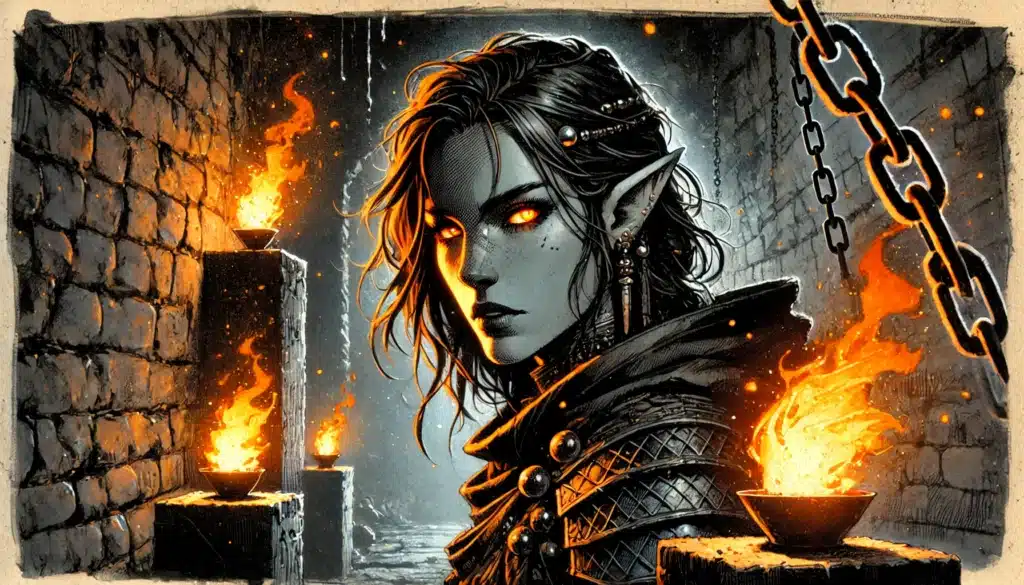
Player Agency: The True North
Amidst all the talk of freedom and control, one principle rises above: player agency. It’s the North Star guiding every campaign, the difference between a story told at your players, and one told with them. Agency isn’t about boundless anarchy—it’s about meaningful choice.
What matters most is whether player decisions change the world, move the plot, and inform outcomes. You can have a tightly-plotted railroad where choices still echo—maybe the villain’s fate is sealed, but how they’re defeated depends on the players’ tactics. A sandbox brims with possibilities, but real agency means that consequences follow, good or ill.
True agency also means letting players set their own goals, discover emergent storylines, and occasionally surprise even the DM. Let them steer, even if you have a destination in mind. A story is only truly shared when the players’ fingerprints are all over it.
In practice, this means listening deeply, responding authentically, and sometimes surrendering control for the sake of a twist you never saw coming.
Ways to Enhance Player Agency:
- Present decisions where the outcome isn’t obvious or binary
- Create branching consequences, not just branching choices
- Have NPCs react believably to party actions (for better or worse)
- Track and reference past deeds in the world’s unfolding events
- Let players brainstorm their goals and pursue personal story arcs
- Use open-world rumor systems to spark curiosity
- Offer multiple solutions to challenges (combat, diplomacy, subterfuge)
- Use vote-based decision points for group choices
- Allow downtime activities to matter (crafting, investigation, relationships)
- Introduce moral dilemmas that force tough prioritization
- Let players create or modify factions, organizations, or settlements
- Allow for failed quests to have ongoing consequences
- Enable “off-script” problem solving; say yes to creative ideas
- Encourage inter-party conflict and negotiation (when appropriate)
- Reward exploration by connecting unrelated plotlines through discovery
The beauty of player agency is that it fuels the story engine, no matter the campaign’s structural bones. Even a linear quest can feel liberated if players’ methods and decisions shape the resulting world. The road may be mapped, but let them choose their speed, their scenery, and their fellow travelers.
Above all, cherish those moments when the party throws a wrench in your plans—and you smile, lean in, and see where their choices take you.

Hybrid Campaigns: The Best of Both Worlds
What happens when you marry the boundless energy of a sandbox with the elegant arc of a railroad? You get the sweet spot that most legendary campaigns strive for: a living world with a pulse, yet a story worth chasing. Welcome to the hybrid campaign.
Hybrids harness the strengths of both styles. You can lay out railroad-style narrative arcs—epic wars, ancient mysteries, ticking clocks—then let players decide how and when to engage, or even ignore them altogether. Likewise, the world moves in the background: missed opportunities, evolving threats, and shifting alliances keep the stakes vivid, no matter where the party wanders.
Think of this approach as “rails within the sandbox” or “sandbox between the rails.” Major story arcs exist, but they’re flexible, with multiple ways to reach or even derail them. World events progress unless the party intervenes. Timelines don’t wait for heroes forever; sometimes, victory is simply surviving the consequences.
Mastering the hybrid style means learning when to tighten the reins (for drama or clarity) and when to let go (for exploration or surprise). Flexibility is your greatest weapon—and your most reliable shield against campaign stagnation.
Hybrid Campaign Techniques:
- Modular quest hubs that offer multiple story paths at once
- Story arcs with several possible entry and exit points
- Player-triggered plot events (factions or villains act only if provoked)
- Rotating NPC agendas that change as the party gains influence
- Timelines that progress whether or not the party is involved
- Dynamic world events based on player reputation and choices
- Multi-stage dungeons with branching objectives
- Sidequests that can alter the tone or difficulty of the main quest
- Major threats or mysteries seeded across many locations
- Faction allegiances that can be changed (or broken) permanently
- Story moments delivered as rumors, not commands
- “Open table” play where players come and go, but the story keeps moving
- Milestone-based XP tied to stories or discoveries
- Player-created goals that the DM weaves into overarching plots
- Pendulum pacing: periods of freedom followed by dramatic focal points
- World consequences that unfold naturally (not just as in-game cutscenes)
The secret is to start with a strong scaffold: a world in motion, a few clear secrets or crises, and then adjust as your group’s play style emerges. Let the players surprise you. Open new doors as they close old ones. Tighten the structure when stakes need rising; loosen the guardrails so creativity has room to breathe.
Try my AI Tabletop RPG generators...and an extensive library of content!
Above all, celebrate the shifting balance. The campaign you begin isn’t always the one you finish—and that’s a sure sign you’re doing it right.
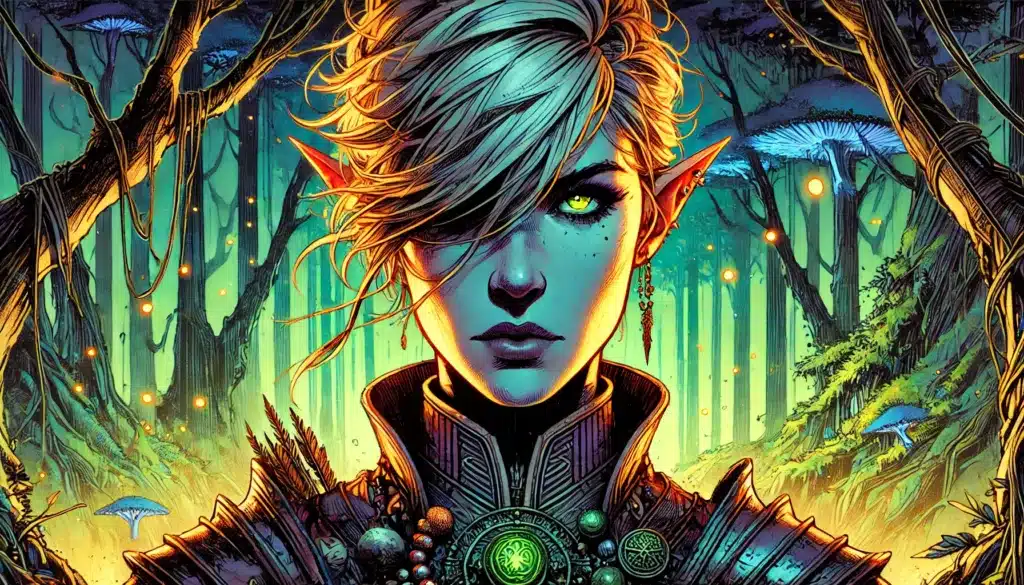
Adapting to Your Players
No DM operates in a vacuum. Every table hums with its own energy, shaped by personalities, expectations, and play styles. Finding your ideal campaign structure means watching your group, listening to feedback, and remaining agile in your approach.
Start with session zero: explore what excites your players, what turns them off, and where their interests naturally align. Are they plot-hounds, drawn to intrigue and drama? Strategy buffs who hunger for tactical choices? Social butterflies? You’ll only know by asking—and observing, as play unfolds.
Don’t be afraid to change course. Debrief after major arcs. Invite honest (and safe) feedback: “Did you feel like your choices mattered this session?” “Would you like more downtime, or tighter story pacing?” Small adjustments often prevent big frustrations down the road.
Watch for unspoken cues. Are players disengaged or abuzz with theories? Are their characters’ goals being pursued, or do they seem lost between sessions? Your flexibility is their lifeline.
| Player Group Type | Typical Preference | Campaign Style Tips |
|---|---|---|
| Story-Driven | Cinematic arcs, strong narrative | Use railroads with flexible moments of choice |
| Tactician-Heavy | Combat, puzzles, consequences | Sandbox with robust challenge and meaningful stakes |
| Roleplayers | Interpersonal drama, character arcs | Sandbox allowing for deep connections, personal plots |
| Explorers | Map discovery, lore, secrets | Open-world sandboxes, modular mysteries, evolving rumors |
| Hack-and-Slash | Action-packed battles, quick rewards | Railroad dungeons, but with off-road side battles |
| Mystery Lovers | Intrigue, clues, layered story | Hybrid: sandbox clues leading to railroad-style reveals |
| Casual/Flexible | Relaxed, drop-in/drop-out sessions | Hybrid open-table, modular quest hubs, optional main quest |
| Power Gamers | Progression, loot, mechanical mastery | Sandbox with big rewards, but clear main path for payoff |
No method is one-size-fits-all. Your ultimate goal is a campaign that sings for your group: clear enough to follow, free enough to explore, challenging enough to invest everyone in the result.
The best campaigns are living organisms, mutating and evolving with each new high—or stumble. Your job is to keep the energy alive, so the party can’t wait for the next session.
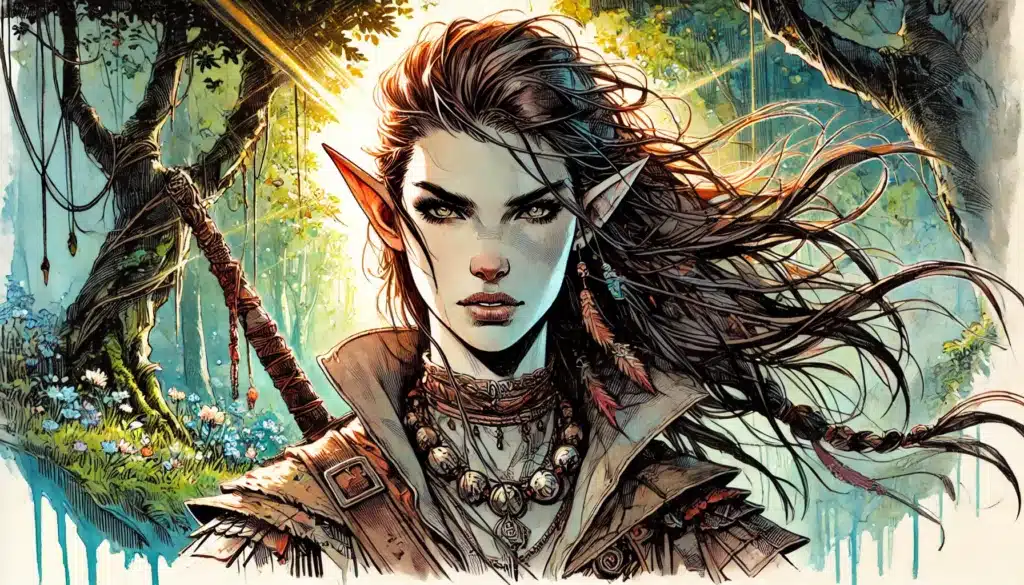
Final Thoughts on Sandbox vs Railroad
The sandbox versus railroad debate isn’t a battle—it’s a dance. Great campaigns slip between structure and surprise, letting players etch their story into the world one bold action at a time. Sometimes the rails are visible, carrying the party through moments of grandeur. Sometimes the horizon is wide open, begging to be explored.
There’s no single “right” way to run a campaign. Every group is a new equation. Styles are only tools—don’t let them become shackles. Borrow freely, experiment recklessly, and above all, keep the session fun, immersive, and collaborative.
As a DM, your chief task is to listen. To the table, to the game, and to yourself. Don’t be afraid to switch gears or throw out the map if it means the party’s enthusiasm soars. Heroes lost in the wilderness may find stories deeper than any prophecy. Adventurers on a track may still leap the rails and rewrite destiny.
Most importantly: story belongs to everyone at the table. Whether you set the path or simply illuminate it, your reward is the tale you spin together. So lay tracks, sow rumors, and keep your world alive with possibility.
⚔️ Fantasy RPG Random Tables Books
Make life as a Gamemaster easier…
If you play Dungeons & Dragons, Pathfinder, or other fantasy RPGs, this
RPG random tables series
is packed with encounters, NPCs, treasure, and more. Available in eBook or print—either way, you’ll have a wealth of adventure ideas at your fingertips.
The wagon wheel might wobble. The rails might twist. But in the end, the true gold is found in the journey—and in the shared laughter of friends at the table.




